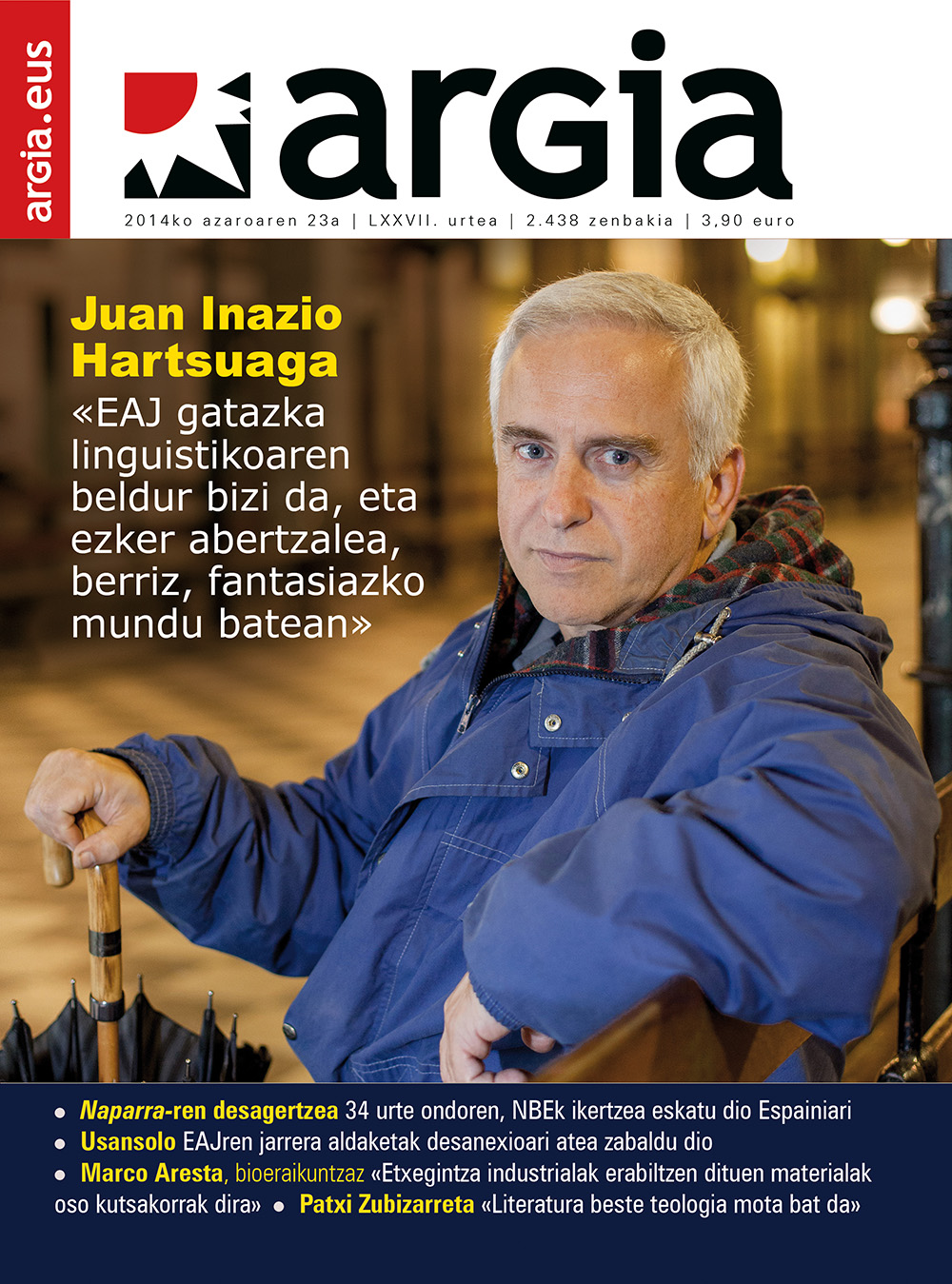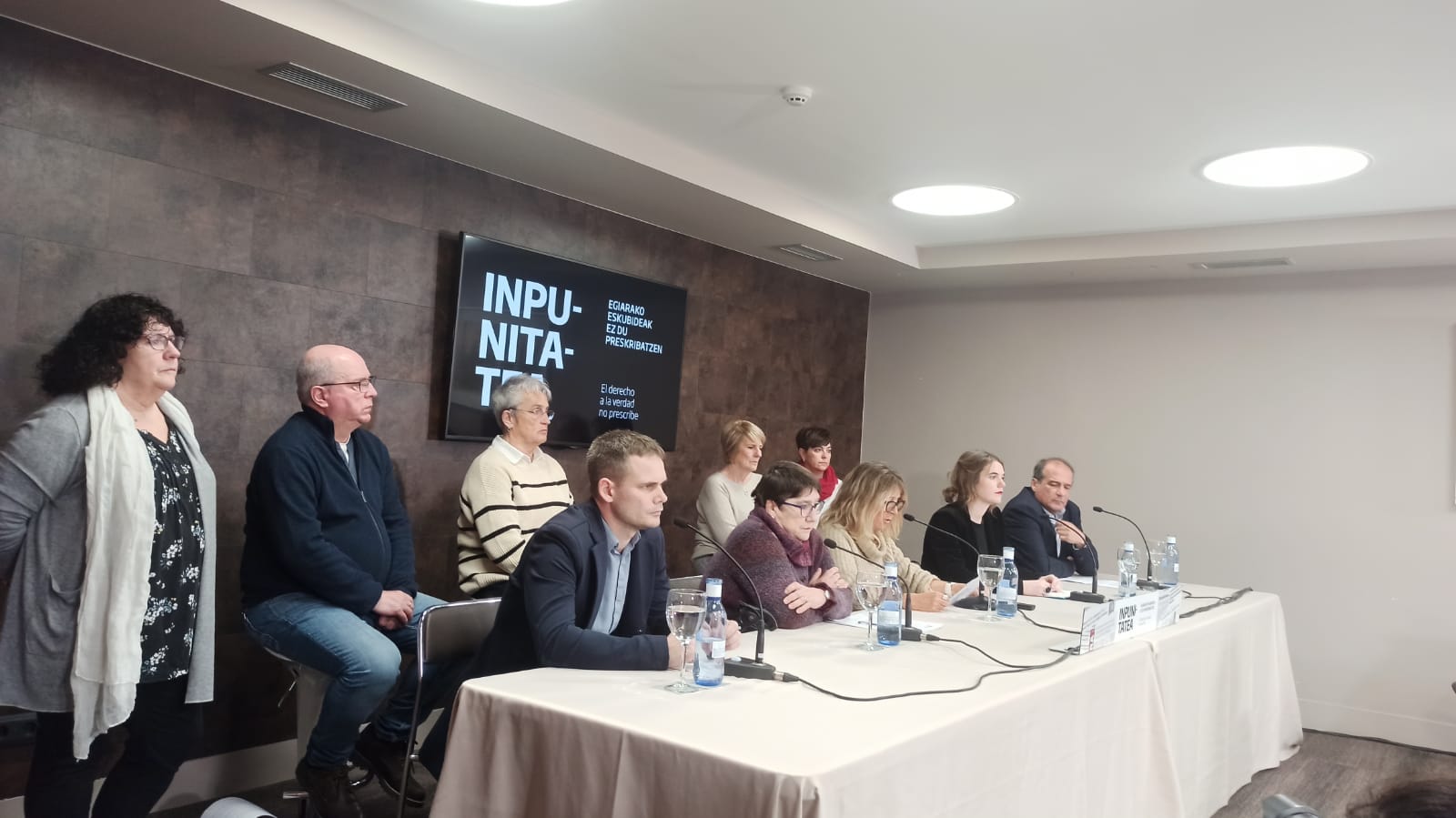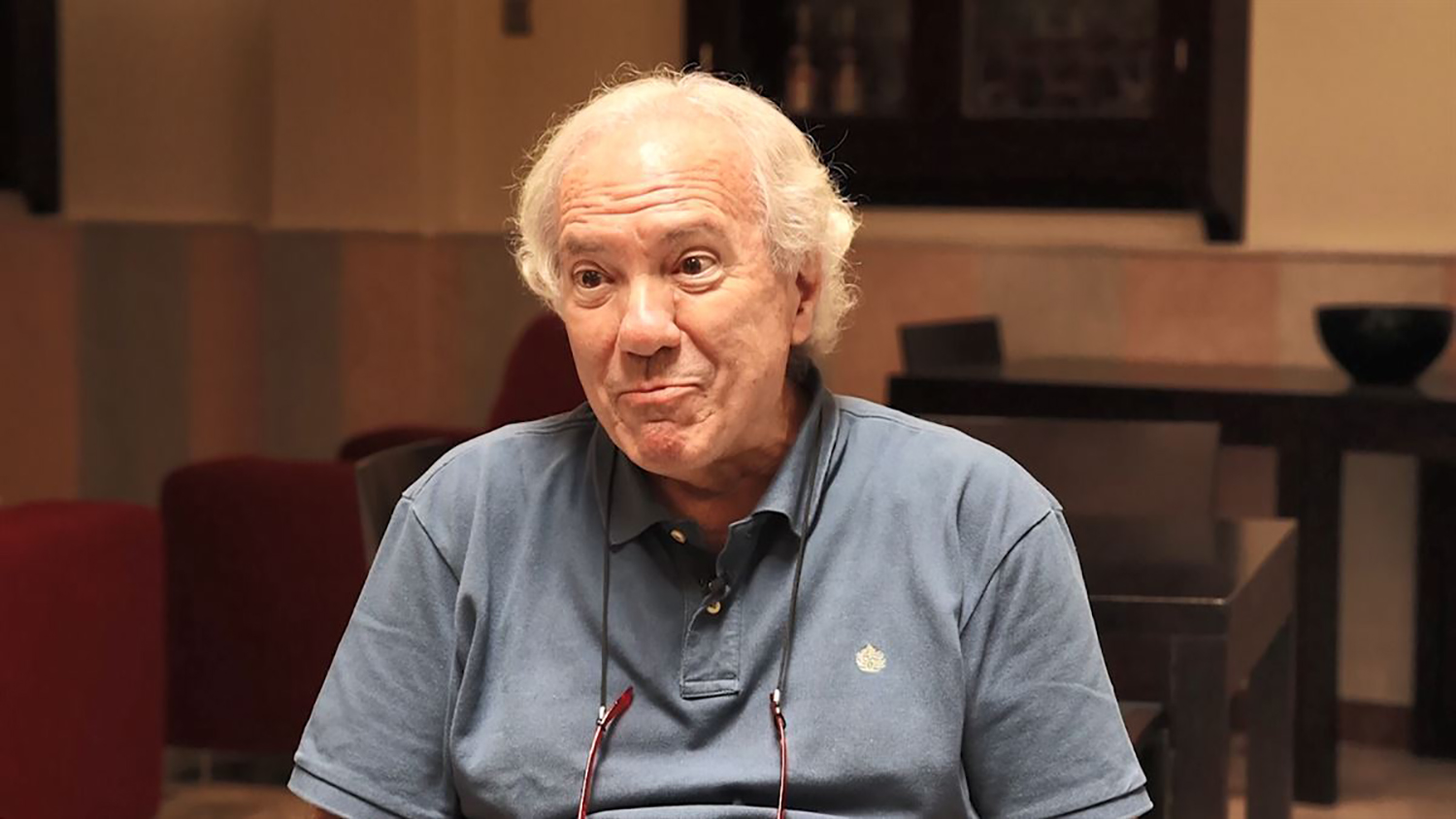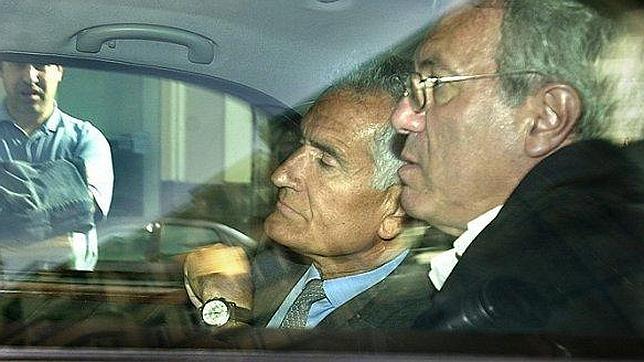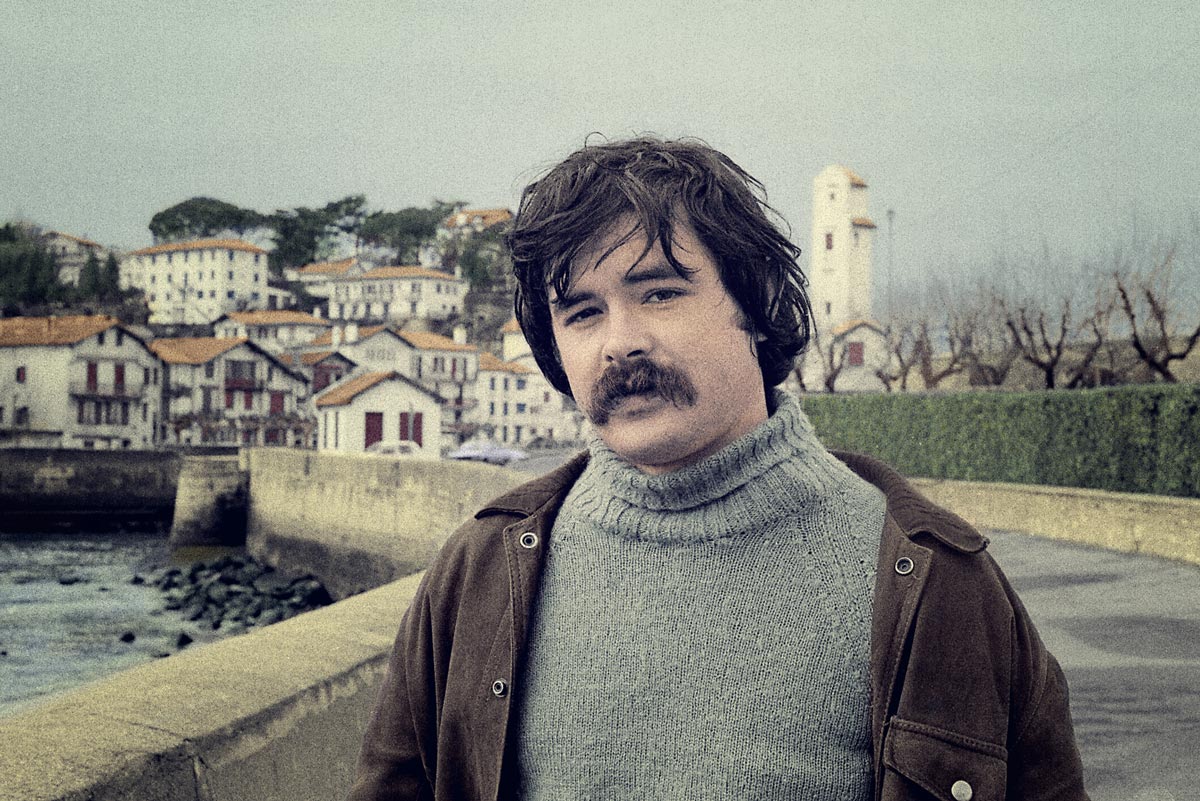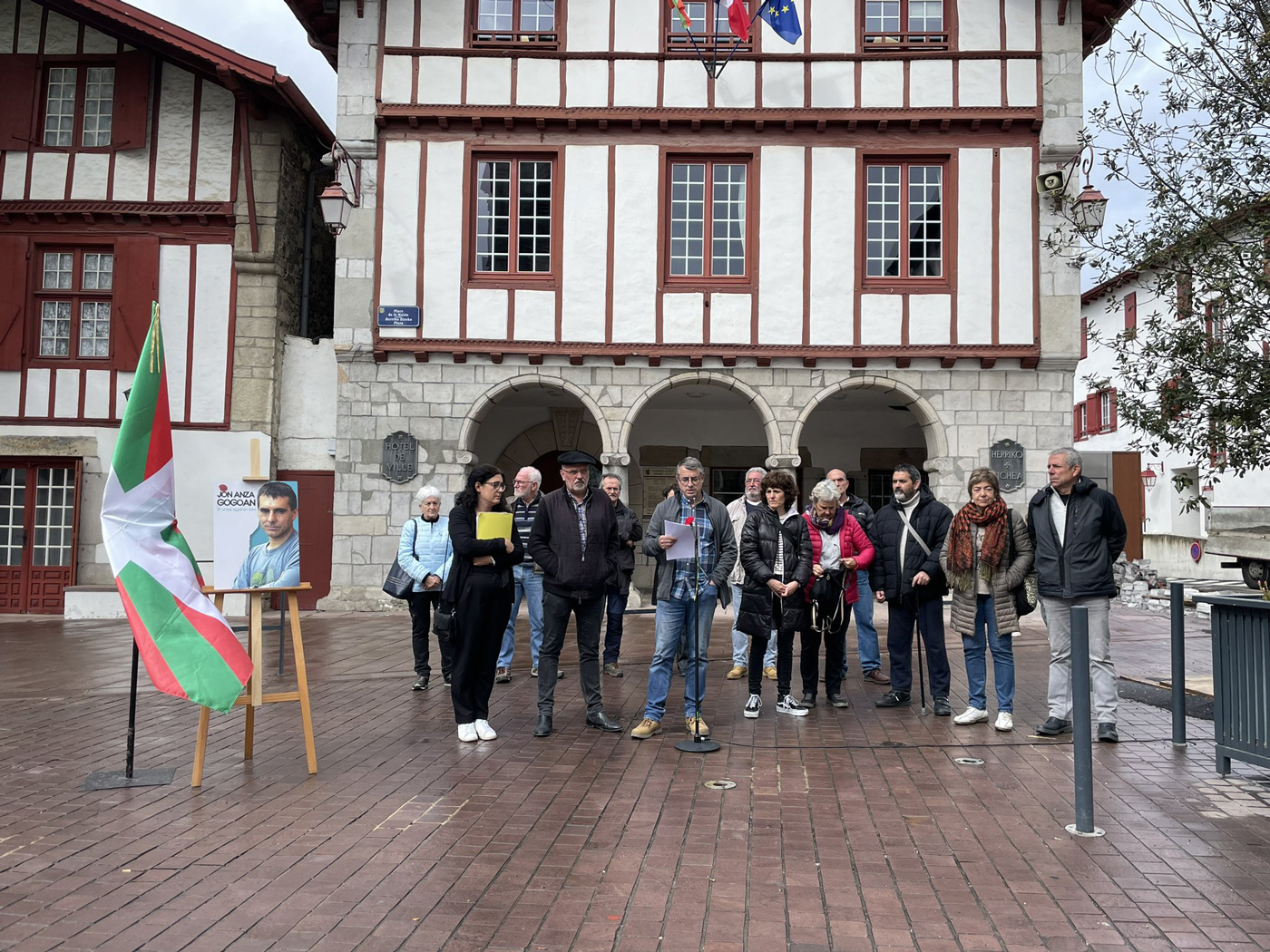The ointment comes from the U.N. after 34 years
- In 1980, the Autonomous Command militant José Miguel Etxeberria Álvarez disappeared in Ziburu (Lapurdi). The kidnapping and murder was claimed by the Spanish police group BVE. Since then, the family has hit dozens of doors and, finally, the UN has acknowledged what mattered so much: The disappearance of Naparra by force, the crime against humanity, the prescription of the crime and the need for further investigation until the case is clarified.
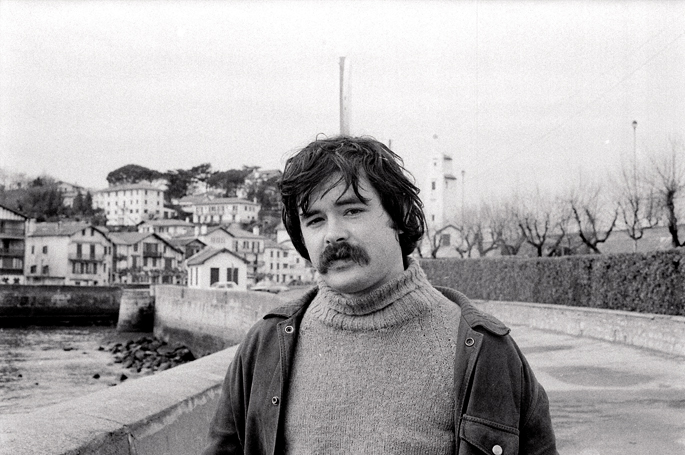
19 October 2014. Eneko Etxeberria Álvarez is located in Geneva, opposite the UN headquarters, on the eve of its far-reaching legal function in the event of the disappearance. He met in September 2013 in Vitoria-Gasteiz with Ariel Dulsky, a member of the Forced Missing Task Force or the UN Force. He was visiting work in Spain and he told him his brother's case. Yes, he has all the signs of a forced disappearance and that the complaint is presented in his UN team.
In March 2014 he filed a complaint in collaboration with the Egiari zor association and now has to file the case with the working team of the empresa.Se adentra, firm, with the desire to unravel as much as he needed. But at the entrance, they don't have any news of them. Shake the phone, call the Egiari zor association, UN representatives... In the end, he told the attendees to let in, that they already have the reference of the room and that they will see that the appointment is true. Said and done: yes, the team is waiting. It's all fixed.
The story has begun, surrounded by 20 people among jurors, translators and other technicians, in the center of the giant room. For 20 minutes, the nucleus of the case has been shortened to the Quintet of the Missing in front of the bench. He explains that they believe in the VBL hypothesis. For another twenty minutes he has answered his strict questions, “I seemed to judge,” Eneko laughs. The jury also says yes, there are indications that Naparra has disappeared by force, and that they will recommend to the Government of Spain and France to investigate the case. The disappearance of the cause does not prescribe until it is resolved that it is a crime against humanity.
It is an achievement for the family, in the end an official stratum recognizes what is the truth of Pernando in the Basque Country, which eliminated it by force. Who and the UN. There was a difference with the Spanish state. The judge of the National Court Ismael Moreno filed the case in 2004 and, furthermore, not with funny conclusions, since according to him, the published data could not conclude that José Miguel Etxeberria would have disappeared as a result of a criminal act, "and even less for a terrorist crime". He also went further, speaking in the closing order of “the possible disappearance”, at 23 years of his disappearance.
The family lawyer, Iñigo Iruin, asked for Manuel Ballesteros, José Antonio Sáenz de Santamaría and other well-known security forces or mercenaries, such as Gilles Perret, to appear, but the judge denied the petition on the grounds that there was no indication of their being called. The family filed a complaint and a few months later Justice Ángela Murillo confirmed the closure. France was faster and filed the case in 1982.
The lack of status quo
Attorney Iratxe Urizar, of Egiari zor, instructed the case before the UN and believes that the result is a great achievement. This Working Group of the Disappeared insists that it does not have the level of power that the courts in The Hague or Strasbourg can have, but that the confession itself is very important: “It does not oblige Spain and France to anything, but this recognition is a kind of rebuke, because it reminds them that they have signed a number of human rights treaties and that they are not doing what these treaties ask them to do.” Difficulty for the future? “A lot, the case has few obvious elements and it happened a long time ago.” To this must be added the scant attitude of the Spanish and French governments in research. In other cases, Spain’s responses to the UN have also been negative.
Eneko’s brother is clear, the family will continue to seek and, if not, one of his grandchildren will meet the bones, as he is now doing with those who have disappeared under Franco.
Pertur, Popo, Naparra... and Tomás Hernández.
Eduardo Moreno was the leader of ETA Politico-Military and disappeared in 1976, when he was a refugee in Iparralde, where he remained for several years. There are several hypotheses about its disappearance, among which are the ‘special’ groups of ETA p-m, but the most powerful hypothesis is the authorship of the para-police groups of the time and also prevails in the open investigation in the National High Court.
Jean-Luis Larre, Popo, member of the armed group Iparretarrak (IK), disappeared on 7 August 1983 after a shooting with the French police in the village of León (Las Landas). IK considers that he was arrested, killed and banished by the police.
Along with Pertur, Popo and Naparra, the Egiari Zor association mentions Tomás Hernández, born in Zaragoza and a refugee after the War of 36 in cases of political disappearances after the death of Franco. He lived in Hendaia and disappeared in 1979. According to historian Iñaki Egaña in Gara (28-09-2013), El País and Enbata magazine explained in their day that Peru Larrañaga, former Spanish police, witnessed the murder of the deceased refugee, suggesting that the murder has something to do with it.
Disappearance. “The worst thing that can happen,” says Eneko Etxeberria. “Only those who have lived it know what that is,” adds Celes, Naparra’s mother. The disappearance of Naparra demonstrates how different treatment has been with the victims at the time when the victim becomes a human being. The victims continue to seek justice, truth and reparation. There will be balance at tangential time.
14 urte iragan dira Etxeberria Alvarez familiarekin bildu nintzenetik, seme eta anaiaren desagerpenaren 20. urteurrenean. Aita-ama eta semea bildu ginen orduan. Gaurkoan Patxi falta da, aita, 2006an hil zen semearen gorpua berreskuratzearen ametsa bete gabe, haren bila dena eman ondoren. Celes Alvarez eta Eneko Etxeberriaren testigantza jaso dugu, Jose Miguel Etxeberria seme eta anaiaren desagerpenetik 34 urtera.
Nola eboluzionatzen du minak denbora horretan?
Celes Alvarez: Ezin da azaldu, halakorik pasatzen duenak bakarrik daki zer den hori. Asko sufritu du familia osoak eta jarraitzen du sufritzen. Non dagoen ez jakitea oso gogorra da.
Halako berriek on egiten dizuete edo zaurian berriz arakatzeak sufrimendua areagotzen du?
C. A.: Honek behintzat on egiten digu, zerbait berria agertzen den bakoitzean, desagerketa argitzeko balio dezakeelako eta horrekin gure nahietara gerturatzen garelako: semearen gorpua lortzea.
Eneko Etxeberria: 34 urte desagertu zela eta jaikitzen zaren egunetako bakoitzean anaia hor duzu [atzamarra jartzen du buruan], eta beti burua dantzan, ea erbia nondik altxatuko den esperoan, datu berri bat, albisteren bat… Edo kasua ezagutzera emateko eta ahaztu ez dadin… Beti hor, buruan. Desagerpen bat da norbaiten aurka egin daitekeen biolentzia mailarik handiena, eta NBEk ere hala aitortzen du.
NBEren honek zer suposatu du zuentzat?
C. A.: Poz handia. Haiei ere esan nien, ea orain behingoz lortzen dugun urratsak ematea.
E. E.: Gure lehen helburua gorpua eskuratzea da, eta ondoren erantzukizunak argitzea. “Non duzue? Itzuli”, hori da gure leloa. Norbaitek bahitu zuelako, eta nonbait ehortzi zutelako.
Eta NBEren onarpen honen ondoren, zer eskatzen die zehazki familiak Espainia eta Frantziari?
C.A. Esan diezagutela non dagoen, norbaitek jakin behar du eta.
E.E. Ikerketa berriz zabaltzea. Azkenean, NBEk orain anaiari buruzko desagerpena onartzea bere garaian Auzitegi Nazionalak esandakoarekin kontraesanean dago: NBEk dio indarrez eragindako desagerpena izan zela eta Auzitegi Nazionalean artxibatu egin zuten, desagerpena bera ere zalantzan jarriz.
Bitartean, gorpua berreskuratu arte ezin atseden hartu.
C.A. Hala da. Agertu arte guk bila jarraituko dugu.
E.E. Beste garai bat bizi dugu eta hemen gertatu denaz kontakizun bat egin behar omen da. Beste toki batzuetan egiaren batzordeak osatu dira gertatu den guztia argitzeko, ea hemen ere halakorik egiten den. Denbora da arazoa, batez ere gure amaren kasuan.
Egiaz hainbeste hitz egiten denean, Naparraren kasuan ere egon ziren hipotesi desberdinak, BVEz gain, orduko beste talde armaturen bat ere izan zitekeela aipatu zen. Nola ikusten dituzue hipotesiok gaur egun?
E.E. BVEren egiletzarena da hipotesi nagusia. Talde armatuen hipotesian, behar adinako ikerketa egin genuen eta hari hori baztertu. Intoxikazio asko egiten da halako kasuetan eta anaiaren kasuan ere saiatu ziren horretan.
Noizbait zuzendu al zaizkizue instituzioetatik zuen auziaz interesa agertuz?
E.E. Eusko Jaurlaritza bai eta ama eta biok izan ginen haren ordezkariekin auziaren berri emanez. Nafarroako Gobernua edo Iruñeko udalaren aldetik inoiz ez zaigu ezer adierazi. Hemen alde guztietatik egin dira giza eskubideen bortxaketak eta askok sufritu izan dugu, baina mina ez da inoren monopolioa, min guztiak aitortu behar dira, ez alde batekoak bakarrik.
C. A. Elizatik ere inoiz ez zaigu inor zuzendu. Ahaztuak izan gara, eta sarri mespretxatuak ere bai. Lagun eta familian ere harreman apurketa handiak izan nituen. Oso mingarria eta tristea da.
E.E. Aita-ama beti kexu agertu izan dira horrekin. Behe mailako apaiz batzuen sostengua izan dugu, baina Elizaren goi mailako esparruetatik ezertxo ere ez. Hala ere, urte hauek guztietan beste jende askoren sostengua izan dugu eta haiei guztiei gure eskerrik zintzoena adierazi nahi diegu.
- 1980ko ekainaren 11. Ziburun finkatutako hitzordu baten testuinguruan desagertu zen Jose Miguel Etxeberria Alvarez, Naparra edo Bakunin. 19an bere autoa topatu zuten Ziburu inguruan.
- 1980ko ekainaren 22a. Batallón Vasco-Español (BVE) talde parapolizial espainiarrak Deiara egindako telefono deiaren bidez Naparraren bahiketa bere gain hartu zuen.
- 1980ko uztailaren 4a. Deiari eginiko deian, Naparra ekainaren 30ean hil zutela eta Donibane Lohizuneko Txantakon lurperatua zegoela jakinarazi zuen BVEk. Miaketa ugari egin ziren emaitzarik gabe.
- 1980ko uztailaren 7a. Agiri baten bidez Komando Autonomoen talde batek zalantzan jarri zuen Naparraren bahiketa BVEk egin izana. Egindako moduagatik, BVEren errebindikazioa zalantzan jarri zuen eta desagertzea beste euskal talde armaturen batek bideratu zuela iradoki.
- 1980ko uztailaren 25a. BVEren izenean hitz egiten zuen pertsona baten esanetan, uztailaren 12an hiru gendarmek gorpua Akize (Akitania) ingurura eraman zuten eta han ehortzi edo desagerrarazi. Abuztuaren 3an deia eta informazioa errepikatu zen.
- 1982. Baionako Auzitegiak desagerpena ikertzen zuen auzia artxibatu zuen.
- 1985eko ekaina. Diario 16eko Rafael Cid eta José Diez Herrera kazetariek argitaratu zuen Naparra Perret Claneko mertzenarioek hil zutela.
- 1999ko iraila. Familiak desagerpena salatu zuen Espainiako Auzitegi Nazionalean.
- 2004ko martxoaren 31. Ismael Moreno epaileak auzia artxibatu zuen eta bere ondorioetan aipatu zuen ez zegoela datu objektiborik Naparra indarrez desagerrarazi zutela esateko.
- 2013ko iraila. NBEko Indarrez edo Nahitaez Desagertutakoen Lan Taldeko Jazminka Dzumhur eta Ariel Dulitzkyri auzia azaldu zien familiak.
- 2014ko martxoa. Egiari Zor elkartearen laguntzarekin, familiak salaketa jarri zuen pertsona desagertuei buruzko NBEko lan taldearen aurrean.
- 2014ko urriaren 19a. Naparraren anaia Eneko Etxeberria Genevan izan zen NBEko egoitzan desagertuen lan taldearen aurrean auziaren testigantza emanez. Lan taldearen aburuz, nahiko datu dago NBEn kasua indarrez gertatutako desagerpen gisa onartzeko.
Fusilamenduak, elektrodoak eta poltsa, hobi komunak, kolpismoa, jazarpena, drogak, Galindo, umiliazioak, gerra zikina, Intxaurrondo, narkotrafikoa, estoldak, hizkuntza inposaketa, Altsasu, inpunitatea… Guardia Zibilaren lorratza iluna da Euskal Herrian, baita Espainiako... [+]
GALeko biktima talde batek eman du kereilaren nondik norakoen berri Bilbon egindako prentsaurrekoan, Egiari Zor fundazioak eta Giza Eskubideen Euskal Herriko Behatokiak lagunduta. GALen aurkako eta, zehazki, José Barrionuevoren aurkako kereila aurkeztuko dute.
Felipe Gonzálezen garaian Espainiako Barne ministroa zen José Barrionuevoren aurkako kereila aurkeztuko dute, Ipar Euskal Herriko errefuxiatuen aurka abiatu zuen estrategiagatik. ZEN Zona Especial Norte Planaren barruan egindako ekintzen erantzule nagusietako bat... [+]
Maiatzaren 30ean Nafarroako Gobernuak zenbait biktimaren aitortza egin zuen eta senitartekoek Sekretu Ofizialen Legea bertan behera uzteko eskatu zuten. Horien artean, Mikel Zabalza eta Mikel Arregiren familiak. ‘Naparraren’ anaiak ere egina du eskaera hori. Eneko... [+]
Jose Miguel Etxeberria, Naparra, aurkitzeko bigarren saioak porrot egin du Landetako Mont de Marsan herriko inguruetan. Iruñean ostiral honetan egindako agerraldian horren berri eman dute Eneko Etxeberria Naparra-ren anaiak eta Iñaki Egaña Egiari Zor... [+]









